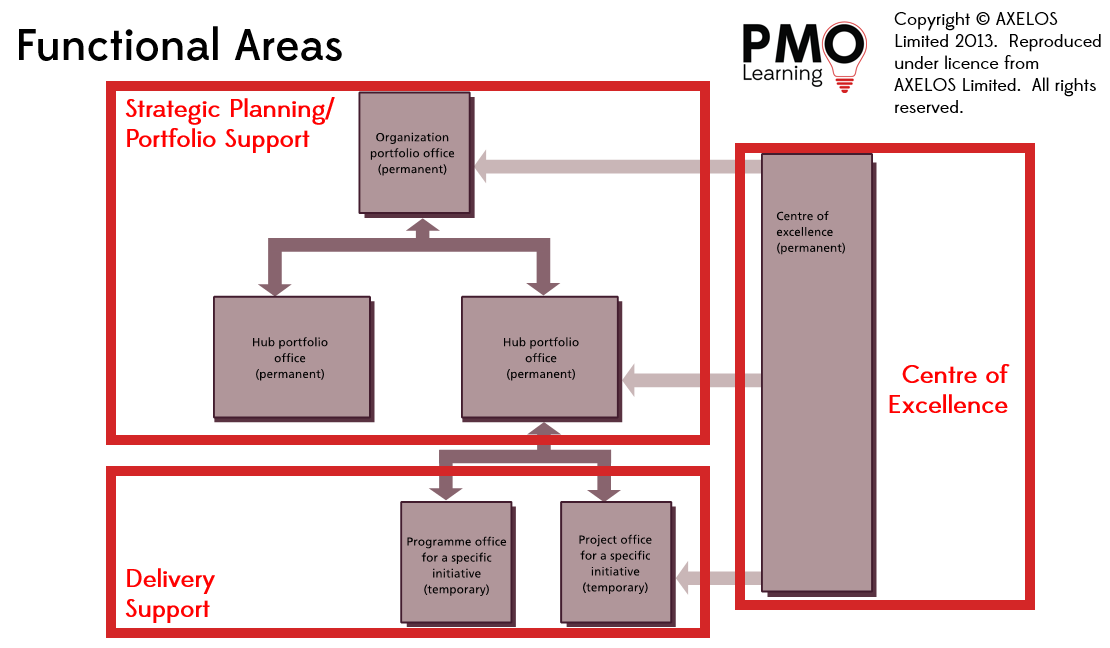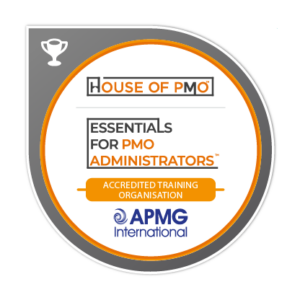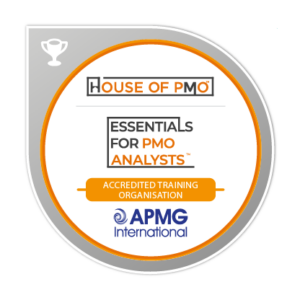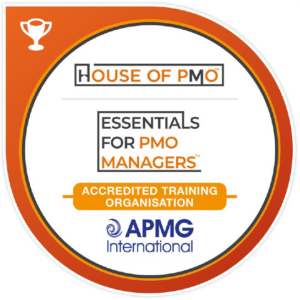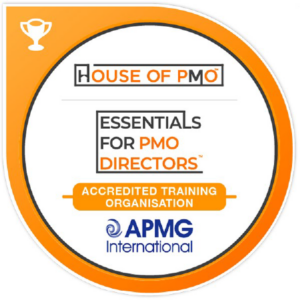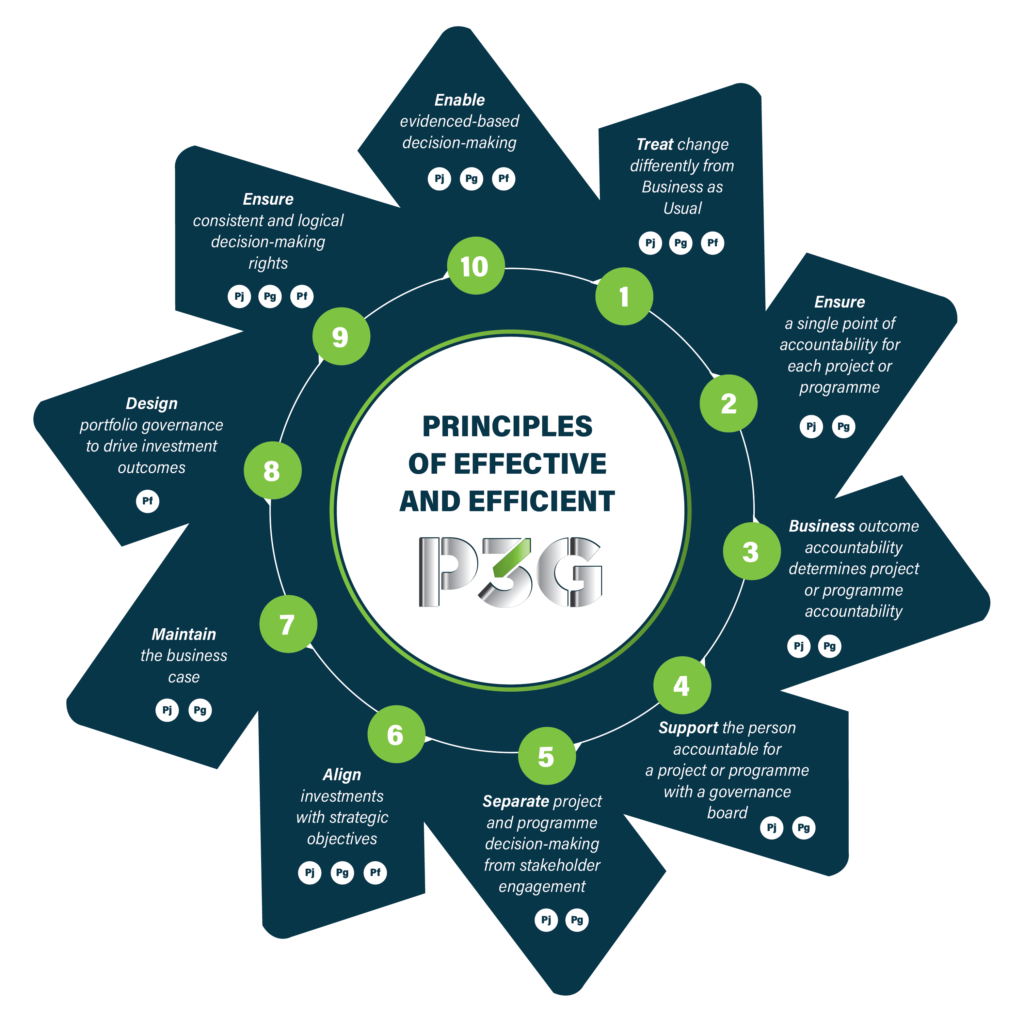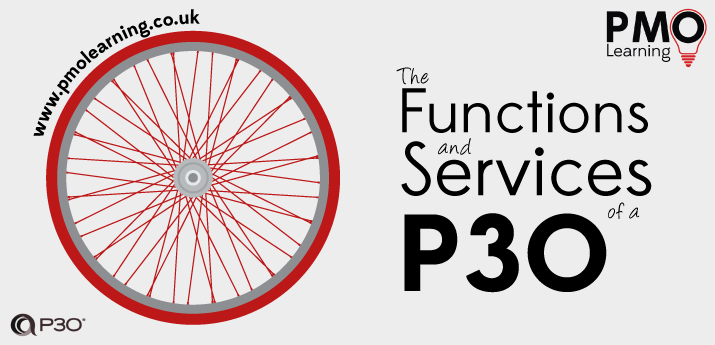
You’ll often hear PMO practitioners referring to the functions and services of a PMO. The terms have really stuck after the introduction of the P3O® guidance – Portfolio, Programme and Project Offices – from AXELOS.
You’ve probably also heard the term, “hub and spoke” model which is another one which has stuck from P3O® too.
In this article, we take a look at all three of those – the hub and spoke; functions and services, according to P3O® and to give some insights into what you can expect on the P3O® Foundation course.
 Hub and Spoke
Hub and Spoke
The hub and spoke term refers to the different configurations of PMO you might have within an organisation. If you’re delivering projects, it could be as simple as just one PMO which is focused on supporting projects. When there are lots of projects and programmes, an organisation might opt for PMOs supporting projects, programmes and introduce a portfolio level PMO too.
With this kind of configuration, the portfolio level PMO would be a permanent fixture and be the hub. The project and programme level PMOs could be temporary in nature and report into that centralised portfolio level PMO. The project and programme level PMOs would be the spokes.
The image below is the classic view from P3O® and within the course, it covers all the different configurations and most importantly the success criteria for different setups.
The image also shows the functional areas – or the different types of PMOs and what those PMOs predominantly do. Programme and project offices are mainly providing delivery support, whereas organisational portfolio offices are focused on portfolio management work plus the more strategic planning work.
These functional areas are not the functions we refer to when we’re talking about functions and services in the PMO.
For that, we take a look at the next picture.
PMO Functions and Services
We generally gain an insight into how knowledgeable a PMO practitioner is by their understanding of the hub and spoke model. Regardless of their own experiences working within a PMO, it is expected that PMO practitioners have a wider understanding of what is possible with different PMO setups.
The same is also true for what PMO functions and services are. I guess you could call it the terminology of our trade and PMO practitioners should be able to easily articulate what a function and a service are.
The function is the high-level categorisation of services the PMO can offer.
For example, risk management is the function, the services may be assisting in the creation of the risk management plan, facilitating a risk workshop or completing a risk log.
Why is it important that we make the distinction?
It’s mainly due to the fact that because there are different functional areas of PMO i.e., the permanent portfolio hub PMO and the project level PMO. The function of risk management would exist both at the portfolio and project level PMOs but the services would most likely differ. There is a different emphasis.
The portfolio level PMO – establish and maintain the portfolio risk register.
The project level PMO – establish and maintain the risk register.
The centre of excellence PMO – develop the overall risk management strategy for all the projects and programmes within the portfolio.
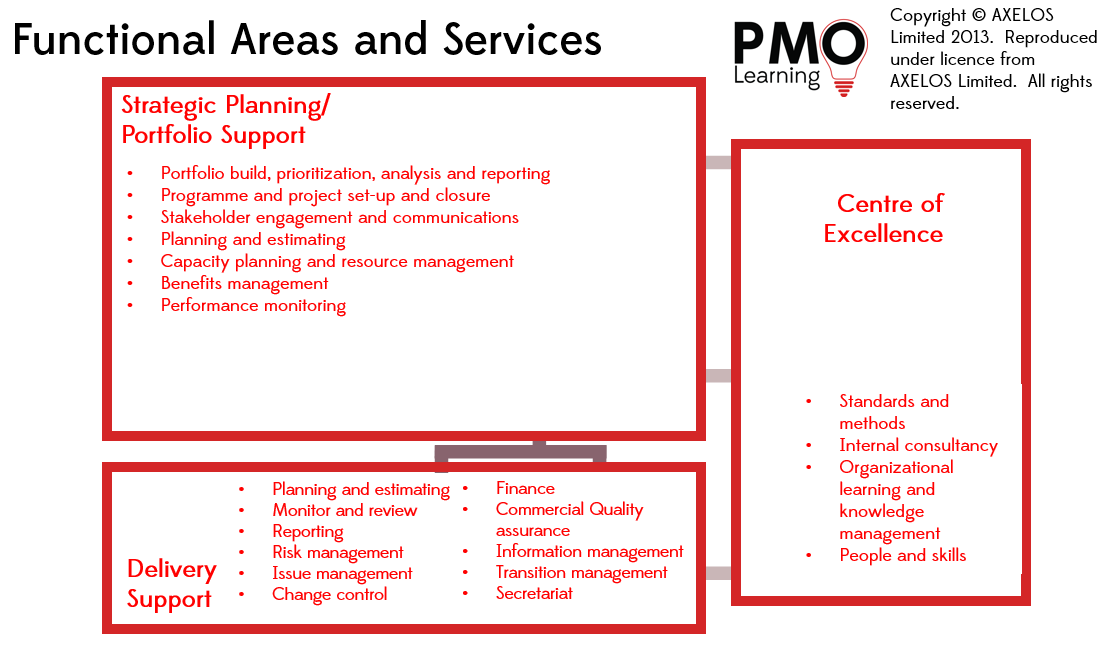
In the P3O® Foundation, you will learn about the different functional emphasis of PMOs, the different functions and services offered and why certain functions and services should be offered over others.
Following the course you will gain a better understanding of:
- The best practice PMO models, processes, techniques and tools
- Key PMO functions and services such as resource management, risk management, stakeholder management and so on
- The bigger picture about where the PMO fits within the organisation and what it is mandated to do
- More about programme and portfolio management, and;
- How to improve certain functions and services
The Exam
The P3O® Foundation course includes an exam on the third day and takes the form of multiple-choice questions and answers. If you’ve been on any of the AXELOS courses before you’ll already be familiar with the types of questions.
Here’s an example question from P3O®, know the answer?
Which function or service should be provided by a COE?
- Monitoring programme risks
- Delivering programme communications
- Managing knowledge
- Prioritizing the portfolio
P3O Foundation Training
PMO Learning has been offering P3O® courses since we first started three years ago. The guidance from AXELOS was actually written by our lead P3O® trainer Eileen Roden so you’ll be hard pushed to find a better P3O® course available. Eileen does a brilliant job of not only teaching the course and giving you the best possible shot at passing the exam – she also introduces action learning with some of the exercises for delegates throughout the course.
If you’re unsure if P3O® Foundation training is for you, why not take a look at P3O® Foundation – why it could be the one for you. If you’re looking for help to justify the course for your development, this handy training justification is perfect.
Find out more about P3O® Foundation training from PMO Learning – the only P3O course providers delivered by PMO experts.
The P3O® courses on this page are offered by PMO Learning. P3O® is a [registered] trade mark of AXELOS Limited. P3O® is a registered trade mark of AXELOS Limited, used under permission of AXELOS Limited. The Swirl logo™ is a trade mark of AXELOS Limited, used under permission of AXELOS Limited. All rights reserved.
Enjoying Our Blog?
Sign up and receive all our articles (we’ll send you an update once a week!) plus special offers and events:

